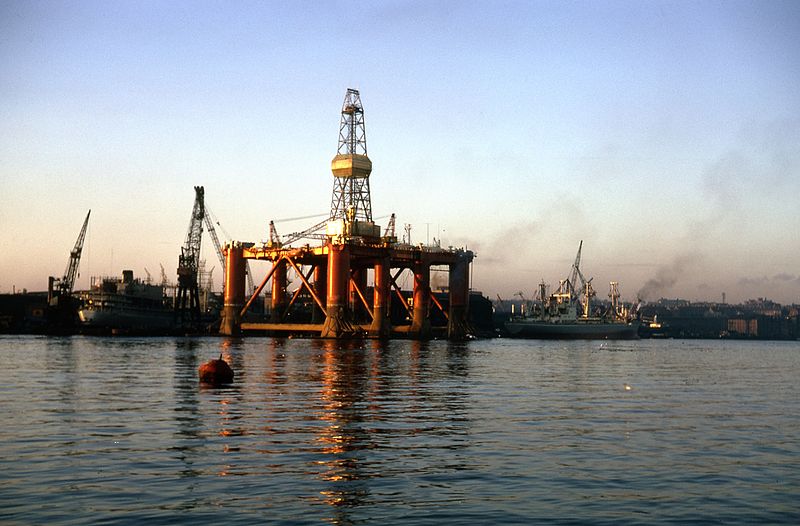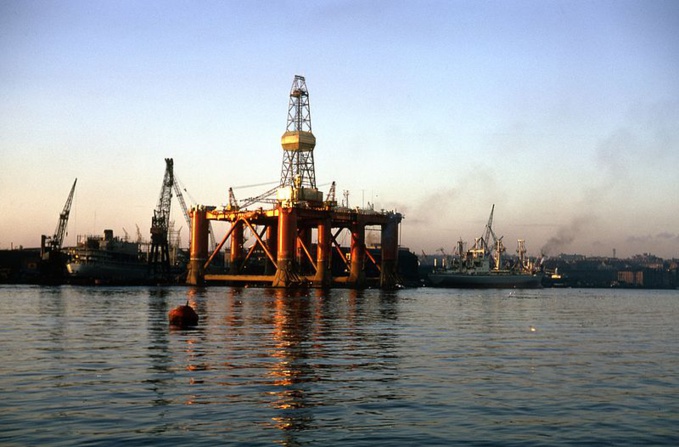In the period from 2014 to 2016, oilfield services companies significantly reduced the number of employees. On average, about 35%, or about 300,000 employees of the world's 50 largest oilfield service companies, were forced to leave the oil and gas industry as a result of a protracted recession. Despite recent cuts in the offshore oilfield services segment, there are reasons for optimism. Since the beginning of 2017, activity in the oilfield service industry has grown significantly, and many service companies have announced recruitment of employees in North America on continental deposits. At the same time, number of staff cuts in offshore fields seems to have reached a lower level.
As a rule, hundreds of thousands of specialists and workers are involved in oil and gas fields. However, from 2014 to 2016, once one of the fastest growing industries turned into one of the most declining in terms of the number of jobs. Total reduction in the number of specialists (full time employment) was around 35% for the 50 largest service companies.
The continental North American market has experienced the most severe consequences of the low oil and gas activity. Two of the largest drilling companies - Nabors Industries and Helmerich & Payne - announced a reduction in staff more than once, and both laid off more than 50% of employees. The so-called "big four" (Schlumberger, Halliburton, Baker Hughes, Weatherford), all of whom were doing business in the oilfield services market on the US land, felt no better and dismissed approximately 30-40% of jobs.
In general, the offshore oilfield service industry showed itself more stable when the crisis began, and started to announce mass reductions relatively recently. FMC technologies dismissed 1000 people within an initiative to reduce costs in the run-up to a merger with Technip oilfield service company. In October 2016, Saipem said the company had to reduce about 800 jobs in Europe. Finally, in January 2017 Aker Solutions announced plans to lay off 650 employees due to a prolonged downturn in the market and global reorganization of the company's structure.
Despite the current severe condition, the oil giants are going out of the woods, and 2017 may be a turning point for them. The gradual increase in oil prices since January 2016, as well as growing activity on drilling rigs, brought new optimism to American market. For example, companies operating in the Permian Basin are currently going through explosive growth in both number of equipment and personnel. Temporarily withdrawn equipment for fracturing and well casing is also being returned to the market. Some slate players are responding to this by recruiting previously retired specialists. For example, Halliburton announced opening of an additional 2000 jobs in the US during the first half of 2017.
This is the largest recruiting campaign among dozens of other players in the oilfield services market in North America shale. For oilfield services companies that focus on offshore projects, the signal of a future increase in activity is clearly visible thanks to a start a wave of announcements about new offshore projects. The staff cuts have stabilized and, probably, the number of jobs will soon increase again. Restructuring of most offshore oilfield services companies will be completed in 2017, which will allow companies to concentrate on expanding their projects, rather than cutting costs.
In Norway, the total number of cuts for the I quarter of 2017 has not increased, and those few companies that announced additional layoffs (GE-BHI and Aker Solutions) were balanced by those companies that began to hire personnel to work on the Norwegian shelf. Globally, only growing M&A activity can delay the new wave of recruitment, which, we expect, may begin in the offshore oilfield segment in the second half of 2017. Nevertheless, the offshore oilfield services industry is adapting to a new reality in which the activity of offshore development and a large-scale return of specialists in this segment will be possible if the level of activity begins to grow in 2018.
source: forbes.com
As a rule, hundreds of thousands of specialists and workers are involved in oil and gas fields. However, from 2014 to 2016, once one of the fastest growing industries turned into one of the most declining in terms of the number of jobs. Total reduction in the number of specialists (full time employment) was around 35% for the 50 largest service companies.
The continental North American market has experienced the most severe consequences of the low oil and gas activity. Two of the largest drilling companies - Nabors Industries and Helmerich & Payne - announced a reduction in staff more than once, and both laid off more than 50% of employees. The so-called "big four" (Schlumberger, Halliburton, Baker Hughes, Weatherford), all of whom were doing business in the oilfield services market on the US land, felt no better and dismissed approximately 30-40% of jobs.
In general, the offshore oilfield service industry showed itself more stable when the crisis began, and started to announce mass reductions relatively recently. FMC technologies dismissed 1000 people within an initiative to reduce costs in the run-up to a merger with Technip oilfield service company. In October 2016, Saipem said the company had to reduce about 800 jobs in Europe. Finally, in January 2017 Aker Solutions announced plans to lay off 650 employees due to a prolonged downturn in the market and global reorganization of the company's structure.
Despite the current severe condition, the oil giants are going out of the woods, and 2017 may be a turning point for them. The gradual increase in oil prices since January 2016, as well as growing activity on drilling rigs, brought new optimism to American market. For example, companies operating in the Permian Basin are currently going through explosive growth in both number of equipment and personnel. Temporarily withdrawn equipment for fracturing and well casing is also being returned to the market. Some slate players are responding to this by recruiting previously retired specialists. For example, Halliburton announced opening of an additional 2000 jobs in the US during the first half of 2017.
This is the largest recruiting campaign among dozens of other players in the oilfield services market in North America shale. For oilfield services companies that focus on offshore projects, the signal of a future increase in activity is clearly visible thanks to a start a wave of announcements about new offshore projects. The staff cuts have stabilized and, probably, the number of jobs will soon increase again. Restructuring of most offshore oilfield services companies will be completed in 2017, which will allow companies to concentrate on expanding their projects, rather than cutting costs.
In Norway, the total number of cuts for the I quarter of 2017 has not increased, and those few companies that announced additional layoffs (GE-BHI and Aker Solutions) were balanced by those companies that began to hire personnel to work on the Norwegian shelf. Globally, only growing M&A activity can delay the new wave of recruitment, which, we expect, may begin in the offshore oilfield segment in the second half of 2017. Nevertheless, the offshore oilfield services industry is adapting to a new reality in which the activity of offshore development and a large-scale return of specialists in this segment will be possible if the level of activity begins to grow in 2018.
source: forbes.com



















